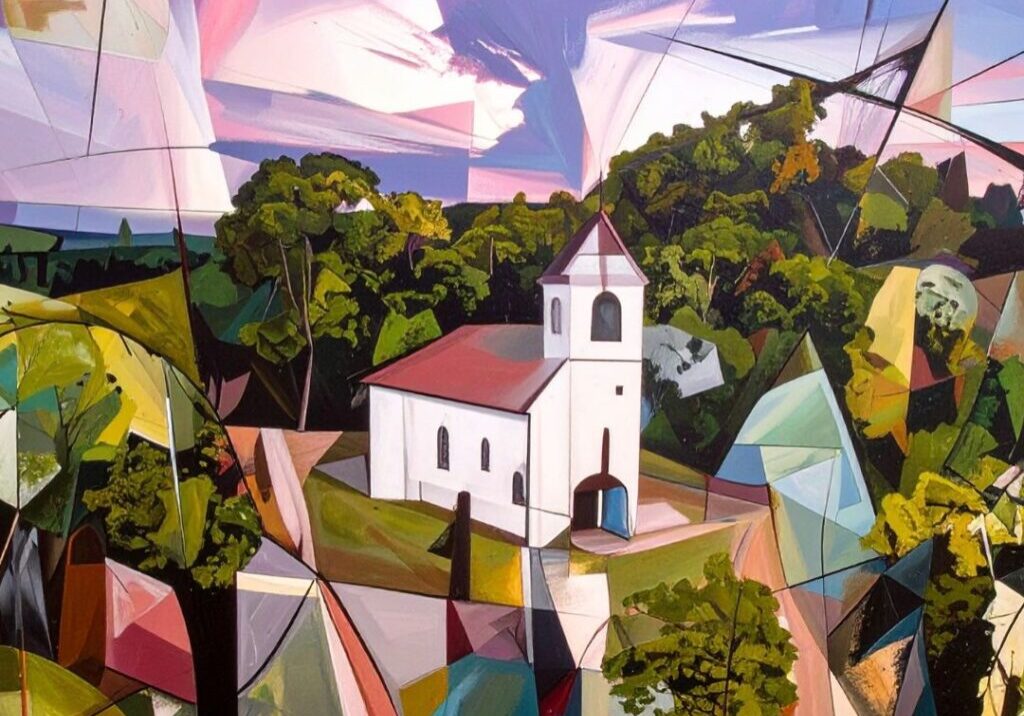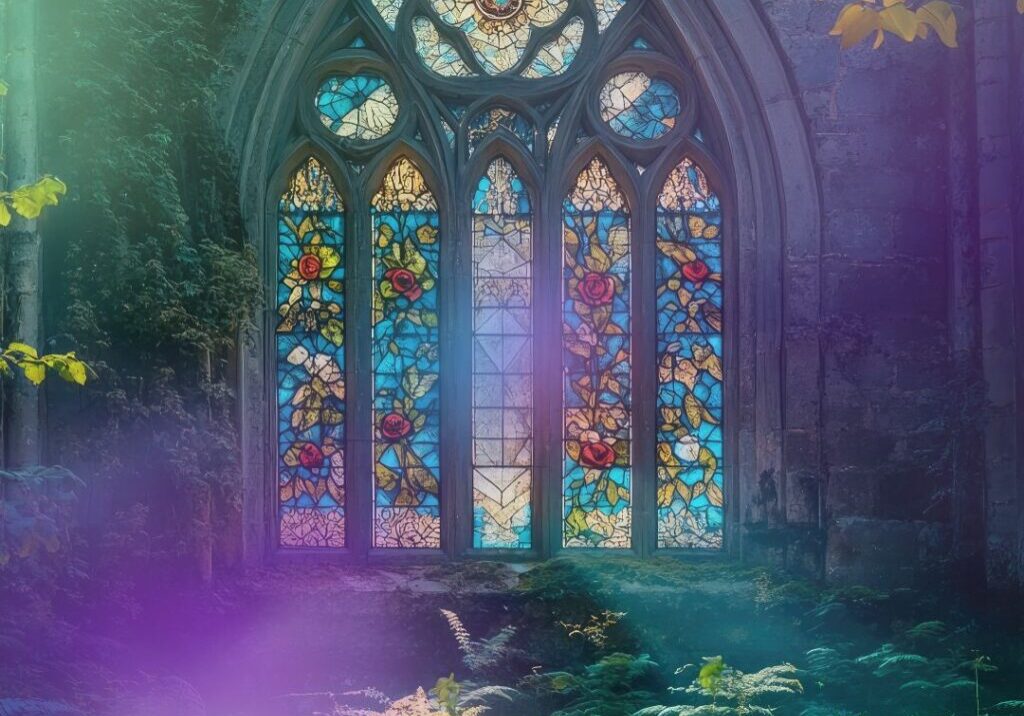The Humility of God
This month I returned to my roots in Franciscan theology in order to write a book chapter on Early Franciscan mysticism. I revisited the world of Francis of Assisi who was a simple man, “unlettered,” and, in a sense, “uncluttered,” by soundbites and lofty ideas. In his youth he was a lover of fine things, a cloth merchant, a rogue, an attention-seeker. He wanted to be a famous knight in shining armor but wound up, instead, severely injured and lying on death’s door in a soldier’s hospital. While recovering from his wounds, he experienced a power of love within him, calling him to rethink his life and where it was going.
When he left the hospital, he changed his life’s direction. He began wandering in fields and praying in solitary places. One day while traveling on horseback, he met a leper walking along the road. He despised lepers in his youth; they were despicable and untouchable. Yet, this day he chose to dismount his horse, give the leper alms, and then—in a most stunning turn of events— kissed the leper’s hand. In his Testament he said that in kissing the leper’s hand “what was bitter tasted sweet.” What prompted him to kiss the hand of the very type of person he previously despised? He realized the God of love he experienced within himself was also present in the wounded leper. From then on, he began to care for lepers as a brother.
Francis had a single desire, to live the Gospel life. The life of Jesus Christ spoke to him of a God who descended in love, from the highest love—infinite love–into the humble and fragile nature of the human person. Francis came to realize that God is hidden in the most ordinary forms of life– flowers, earthworms, birds, wolves and, in a particular way, human persons. God has come to us and finds us each day where we are and as we are, loving us without conditions. Our human vocation is to love God in return: “The love of him who loved us is greatly to be loved,” Francis sang. How do we love a God who already loves us? The question is so utterly simple yet hard to grasp.
Francis of Assisi would have found resonance with the incarnational vision of Teilhard de Chardin. “There is nothing profane below here for those who know how to see,” Teilhard wrote.[1] Seeing is everything. Teilhard began his magnum opus, The Human Phenomenon, by saying that one sees the whole or nothing at all. The type of seeing that Francis and Teilhard both advocated is vision of the heart; the heart that sees rightly sees the truth of reality. Unlike Francis, Teilhard was a trained scientist; however, both scientist and troubadour realized the same truth–matter is filled with God—infinite, divine love is entangled with matter. Neither Teilhard nor Francis discovered this truth based on Scripture or philosophy but on their experience of matter. Thomas King, SJ wrote: “In the direct experience of the cosmos, Teilhard believed he found an Absolute that drew him in and yet remained hidden. . . He seemed to sink down into matter – the primordial essence from which all emerges and to which all returns.”[2]
As an evolutionary biologist whose work brought him into intimate contact with the earth, Teilhard recognized the power of matter–rocks, dirt, iron, bones—which opened Teilhard to the presence of the Absolute. The power of matter was the ultimate real for him, an indestructible presence not subject to the forces of entropy, experienced in rocks and minerals, as well as within himself. Because of this power of matter within all things, “each human ego is co-extensive with the entire universe.”[3]
Teilhard wrote a prayer to matter, blessing matter, not for what it tells us about itself, but because we would remain ignorant both of ourselves and of God without it.[4] In his “Hymn to Matter,” he exalted matter, singing:
I bless you, matter. . .in your totality and your true nature. You I acclaim as the inexhaustible potentiality for existence and transformation. . .I acclaim you as the universal power which brings together and unites. . .I acclaim you as the divine milieu, charged with creative power. . .Raise me up then, matter. . .until, at long last, it becomes possible for me in perfect chastity to embrace the universe.[5]
Teilhard woke up to “the stuff of things.”[6] He saw matter as neither fallen nor profane. Through matter we enter the world and the world enters us. “The truth is,” he wrote, “that even at the peak of my spiritual trajectory I was never to feel at home unless immersed in an Ocean of Matter.”[7] This stuff formed the fundamental basis of everything; matter ultimately became for Teilhard the place of the Absolute.[8] Teilhard helps us understand what Francis experienced, a new and vital presence of God, not a God draping the world with power, but a God integral to the world’s becoming.
Francis would have resonated with Teilhard’s vision. He was also clear that unless the heart is healed and made whole, the truth of matter eludes us. Can we see the truth of matter? We see the world’s terror, but do we know its capacity for infinite love? Francis somehow had this question in mind, as he undertook a radically ascetic life of poverty and suffering in his desire for purity of heart and clarity of vision. So too did Teilhard.
Suffering and love seem to be like a double helix by which life grows. Suffering is not a problem to be solved but an invitation to grow into a wider vision of love. Francis composed his joyous Canticle of the Creatures as a sick man in constant pain, virtually blind and physically worn out. Similarly, Teilhard composed his profound mystical essay, “The Christic,” a few years before he died in 1955. It is a vision that sees the world in truth, emerging from an inner depth of the psyche, as Carl Jung realized, which opens up to a much wider vision of reality, beyond the narrow ego. Suffering impels us to reorder our lives and reconcile our wounds. The one who lives joyfully through suffering finds a new freedom in love. When we discover this freedom in love, we realize that we are not alone, that we are entangled with a God who is foolishly close, so close that our joys and sorrows, our grief and anguish are wrapped tightly with God’s. So close we forget God’s intimate presence. This was the fundamental message and legacy of Christ’s life.
When Fr. Patrick Malone, SJ experienced a recurrence of leukemia after battling the disease and undergoing a successful bone marrow transplant, he wrote the following:
Jesus is remarkable in that he knew the violence, the nervousness that dwells within us. He also knew of the deeper truth waiting to be born. This broken, anxious world is oozing with God. To encounter this God can be as gentle as an awkward embrace, but it can be as wild as finally realizing and being grateful that our lives do not belong to us.
Faith is more than a magical formula to conquer the worry, regret, shame and resentments that cloud our visions and make us jaded and tired. Having faith does not remove every trace of self-absorption and doubt. Those things are part of the human condition. Faith is what brings us into the deepest truth of our lives. It is a buried truth that says we are in the image of an unlimited, unrestricted, unimaginable love. And when we forget that, as Jesus reminded the religious authorities of his day, then religion does become a shield, a crutch, a closed refuge instead of a way to boldly throw ourselves into a harsh world, knowing that is precisely where we discover a generous God.[9]
There is only one real dwelling place for divinity, and that is the human heart. Francis knew this truth and so did Teilhard. How can we return to this heart in such a disrupted world? How can we see with new eyes when the world seems violent and unpredictable? Both Francis and Teilhard would advise us to begin with the particularity of the real, the human person before us or next to us, the small flower by the side of the road, the wounded animal in the forest, the neglected tree starving for water. See, touch, and taste. And to guard the matters of our hearts –what goes into them and what comes out. The heart cannot hold garbage for too long without becoming toxic. Francis asked us to consider our lives as holy temples, altars of God on which we can offer the sufferings of our lives.
Years ago, I read a poem by Graziano Marchesi entitled, “Tabernacles” about a homeless person receiving communion amidst the gasps of the faithful, all neat and tidy in their pews. We live in a world that shuns immigrants, transgendered persons, homeless people, black people, Asian people and all those who do not fit within our comfortable boundaries of judgment. Can we see such persons with the eyes of our hearts and love them as they are and not what we expect them to be? Praying to a God of our imagination may miss out on the God we see in the flesh. God is so foolishly close that Christians have actually given a name to this holy nearness of God: incarnation. Such radical love!
Tabernacles
It happened fast.
A feeble-brained innocent,
refugee from half-way spaces, moving at the wrong time:
the Bread raised high,
the Cup engaged in mystery,
and he chooses this time to change his seat
from one church side to the other.
For a moment his head blocks the view
of bread yielding to miracle.
For a moment his face and the bread are one.
The words spoken over both.
Then hands shake, extending proper peace;
cheeks meet,
words wish a peace the world has never tasted.
He stares, like a dog offered too many bones at once,
and accepts only one hand’s greeting.
Next comes procession to his first meal of the day
as faces clearly wonder if he understands what this is all about.
He takes the proffered piece of pita
in this most post-Vatican assembly
and stops.
Momentarily thrown by this bread with pockets,
he’s oh-so-gently reassured that it’s quite all right to eat.
He takes
and green teeth masticate the Body of Christ.
Then he reaches for the syrupped goodness of the cup
(Just three sips after him I debate the wisdom of changing lines.)
His puffed-cheek mouthful nearly drains the cup.
(I almost wish he had so I wouldn’t need to tell myself I won’t catch
some disease.)
And then
(I knew it!)
he coughs
and sends forth a rosy mist
that sprays Divinity onto the floor.
A rainbow comes and goes in that unexpected spray
as gasps are quelled in forty throats.
He clamps his mouth with leaky hands
looking like a child
trying to keep a pricked balloon from bursting.
Unslackened, the line moves on
and Divinity is trampled by shod feet
till pure white linen,
–bleached and starched–
in fervent hands that won’t permit impiety,
drinks the pink God from the floor.
In a corner he sits alone
in rapt humiliation.
When someone asks, “Are you O.K.?”
he quickly shows his palms and says,
“I didn’t wipe them on my dirty pants, I didn’t.
I rubbed them hard together, see?”
and he demonstrates, with insect frenzy, how he used friction
to evaporate the spilled God from his hands.
Oh, what a cunning God who tests our faith
by hiding in green-teethed
tabernacles
to see how truly we believe
in the miracle of real presence.[10]
[1] Pierre Teilhard de Chardin, The Divine Milieu, trans. Bernard Wall (New York: HarperTorchbook, 1965), 66.
[2] Thomas M. King, “Teilhard and the Environment,” in Teilhard de Chardin on People and Planet, ed. Celia Deane-Drummond (New York: Routledge, 2006), 185.
[3] Pierre Teilhard de Chardin, The Activation of Energy, trans. by René Hague (New York: Harcourt Brace Jovanovich, 1970), 218.
[4] Pierre Teilhard de Chardin, Hymn of the Universe, trans. Gerald Vann, O.P. (New York and Evanston: Harper and Row, 1965), 69.
[5] Teilhard de Chardin, Hymn of the Universe, 69-70.
[6] Pierre Teilhard de Chardin, The Heart of Matter, trans. René Hague (New York and London: Harcourt Brace Jovanovich, 1979), 20.
[7] Teilhard de Chardin, The Heart of Matter, 21- 22.
[8] Teilhard de Chardin, The Heart of Matter, 21- 22.
[9] Patrick J. Malone, “A God Who Gets Foolishly Close,” America (May 27, 2000). https://www.americamagazine.org/issue/300/faith-focus/god-who-gets-foolishly-close
[10] Graziano Marchesi, “Tabernacles,” in Dawn Nothwehr, The Franciscan View of the Human Person, vol 3, The Franciscan Heritage Series, ed. Elise Saggau (St. Bonaventure, NY: Franciscan Inst. Publ, 2005), 67-8.
 View print-friendly version
View print-friendly version
28 Comments
Related Posts

Beyond Violence: The Path Through Grief to Spiritual Evolution
The recent shooting at Annunciation School in Minneapolis continues to haunt our collective consciousness. While the news cycle moves forward—with yet more senseless acts of political violence—the Annunication tragedy leaves…


Thqnk you for finding a poem that so illustrated your marvelous, mini-disortation on the “foolish closeness of GOD.” Such beautiful words that paint a picture of the interaction between the poor (represented in the street person) and the Bread of Life. Such phrases that describe GOD as “hiding in green teethed tabernacles” or this GOD that was transported via “a rosy mist…onto the floor” wonderfully revealed the “foolish closeness of GOD.” Francis, Teilhard and now yourself are such bright lights that offer us a wonderous perch from which to contemplate and experience the GOD that is so entangled with
What is the meaning of ‘real presence’? Either language is wrong or teaching is not quite there. “Sacrament” – a sign. When was the sign the destination? A sign shows the way; it is not the way. It might tell us ‘we are there’, but it is not the ‘there’. Is Christ, infinite love, limited by the designer, the tradesman who ‘confects’ the sign? Is there a cross without those for whom He suffered? Is there a Resurrection without those for whom He rose? It’s like a creator without creating, without creation. The infinite is not merely that there is no limit; It is the endless reaching out… unconditional, inclusive, endlessly impregnating as it is birthing. The greater mystery is how we impede it.
Dennis, we cannot just look for a scientifically- literal meaning of what Jesus was implying when he said: ‘This (bread) is my body,’ and do this in memory of me.’ He was not talking of some kind of magic formula, he was recreating an ancient Jewish ceremony of identifying who Jewish people are. Of course, he was giving us our own commemorative version of the Jewish custom of remembering and being part of a sacred event within a meal – just as his Hebrew ancestors remembered the escape from slavery in their Passover meal. His ‘sign’ was manifold: My body is going to be broken like bread and poured out like wine; I do this willingly to indicate this is a sign that I will feed you with myself, with my spirit to continue living and loving as I did; I am showing you what kind of world you could create without me, which needs to be changed, to grow into my Father’s kingdom. You can see from my experience how humans are inclined to destroy those you don’t agree with. Of course I am present in this and many other signs! Dennis, I recommend you read James Alison and Rene Girard for the answer to the question: “Why did Jesus die so willingly?”
Your words break through the veil of shame and withdrawal I inflict on myself and others. Only the faith you speak of, the Love that is always present can bring me to turn and face the truth, without Love I am nothing and without love I cannot change.
Thank you. I love your words. I am very glad also with the words of
the Pope: faith and science can unite in charity
In his audience with participants in the conference “Black holes, gravitational waves and space-time singularities” in memory of Fr. George Lemaître, Francisco emphasized the cosmologist’s theory that “creation and the Big Bang are two distinct realities” and that God “cannot be an object easily categorized by human reason.” “Faith and science can unite in charity if science is placed at the service of the men and women of our time,” said the Pope.
https://www.vaticannews.va/pt/papa/news/2024-06/papa-francisco-specola-vaticana-georges-lemaitre-fe-ciencia.html